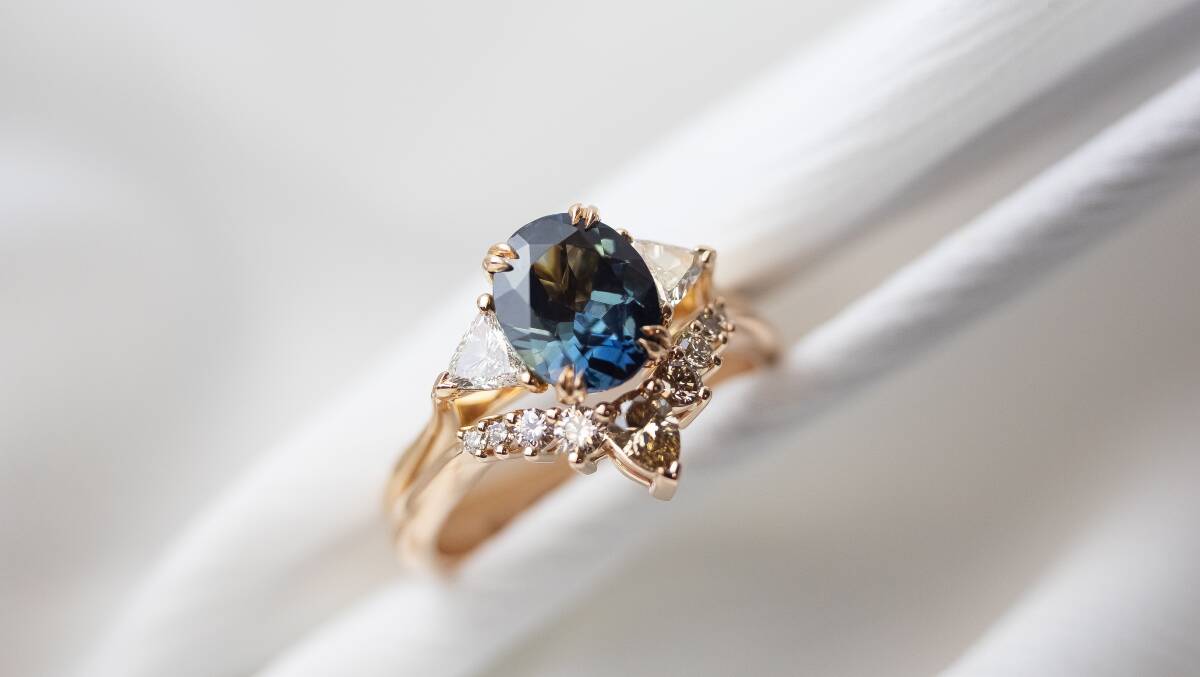
Have you ever stopped to wonder about the historical importance of engagement rings, or what exactly they represent? If you’re planning on purchasing an engagement ring in the near future, it’s a great idea to familiarise yourself with these concepts before diving into this all-important purchase.
Without any further ado, check out our complete guide to the history and symbolism of the engagement ring. Once you’ve got all the information you need to make the perfect selection, head over to Larsen Jewellery and shop the best engagement rings Melbourne.
The history of engagement rings
The practice of exchanging rings as a sign of love is said to have originated in Ancient Egypt. Constructed from materials including leather, bone and ivory, these rings might not be suited to modern tastes, but the beginnings of a time-honoured tradition were already in place.
Following the conquering of Egypt under Alexander the Great, rings as a symbol of love became incorporated into Ancient Greek society. They improved the materials used to iron and copper and exchanged these rings in wedding ceremonies.
As the wheel of history rolled onwards, the Romans conquered Greece and took on this practice as well. Once again, an upgrade was on the cards as iron and copper rings were replaced by gold from the 2nd Century onwards. As time went on, rings gradually became more and more gaudy.
Of course, marriage was not always the egalitarian practice it is seen as today. Historically, marriage has been used as a way for men to claim women as their property, and many ancient civilisations used rings as a way to symbolise the ownership of a husband.
The Medieval Period saw the inclusion of precious gems into rings. The original diamond engagement ring may have been given in 1477 to Mary of Burgundy. Reportedly, the diamond sat on a plain band and consisted of a small number of diamonds arranged to form the letter ‘M’.

The 17th Century saw European lovers each wear a band during the engagement period, before interlocking the two bands in a wedding ceremony, typically on the bride’s finger.
Today, diamonds are the most popular engagement ring stone. The slogan of De Beers, ‘A Diamond is Forever’, was first used in 1947, and cemented the notion of diamonds as the ultimate symbol of eternal devotion in Western culture.
The delineation of wedding rings and engagement rings as two separate pieces of jewellery may originate in the 12th, when the Christian church formally established marriage as a holy sacrament, with rings playing a central role. Previously, men would give more decorative rings to women. Thus, these more personal rings may have been the progenitor of the engagement ring, while the more formal, holy rings used in the service itself became the modern wedding ring.
The symbolism of engagement rings
One of the most important things symbolised by an engagement ring is eternity. The pharaohs of Egypt were early adopters of circular jewellery to symbolise eternity, as the shape has no beginning and no end.
It’s also said that Egyptians placed rings on the fourth finger of the left hand, which was believed to contain a vein which led directly to the heart.
You don’t need a history degree to recognise what highly ostentatious engagement ring designs are supposed to represent. Lovers wanted to use their wealth to establish their position in society and show off just how much they love their partner. Or, for the more cynical reader, how much they wanted to enjoy the economic benefits of marrying them.
What about the gemstone of an engagement ring? Here a few of the most popular gemstones, and what they symbolise:
- Diamond – This stone is now synonymous with everlasting love. Historically, diamonds were also associated with loyalty thanks to their highly durable nature.
- Sapphire – The sapphire is believed to represent truth, purity and faithfulness.
- Emerald – Emeralds served as offerings to Venus, the goddess of love, in the time of Ancient Rome. Emeralds can also symbolise eloquence, wit and foresight, making it the perfect choice for your brainy partner.
- Ruby – The deep red of a ruby stone is the perfect symbol for desire, passion and, of course, love.
Using history and symbolism to choose your engagement ring
Now you know all there is to know about the history and symbolism of engagement rings, how can you best use this knowledge to choose the perfect ring for your partner and begin the journey to your wedding in the best way possible?

One idea is to draw upon the ancestry of your partner and look to the traditions of engagement rings and other jewellery of that culture. This might include some of the cultures we’ve analysed so far in this article, or any other country. It’s a beautiful way to pay homage to those who have gone before you.
If you or your partner had been turned off by the idea of a simpler, more affordable wedding band design like copper, you may want to rethink this notion in light of how commonly it has been used throughout history. It has proven good enough for the common folk of history for millennia on end, so if you see a wedding band design you love, don’t concentrate solely on the material.
Is there another historical detail which has caught your eye? Maybe you love the idea of interlocking your engagement rings’ on your partner’s finger. Perhaps implementing emerald, the gemstone associated with the goddess Venus, is too good an option to pass up. Whatever detail you want to include in your engagement ring, it’s the perfect way to show your love in a very unique way.
